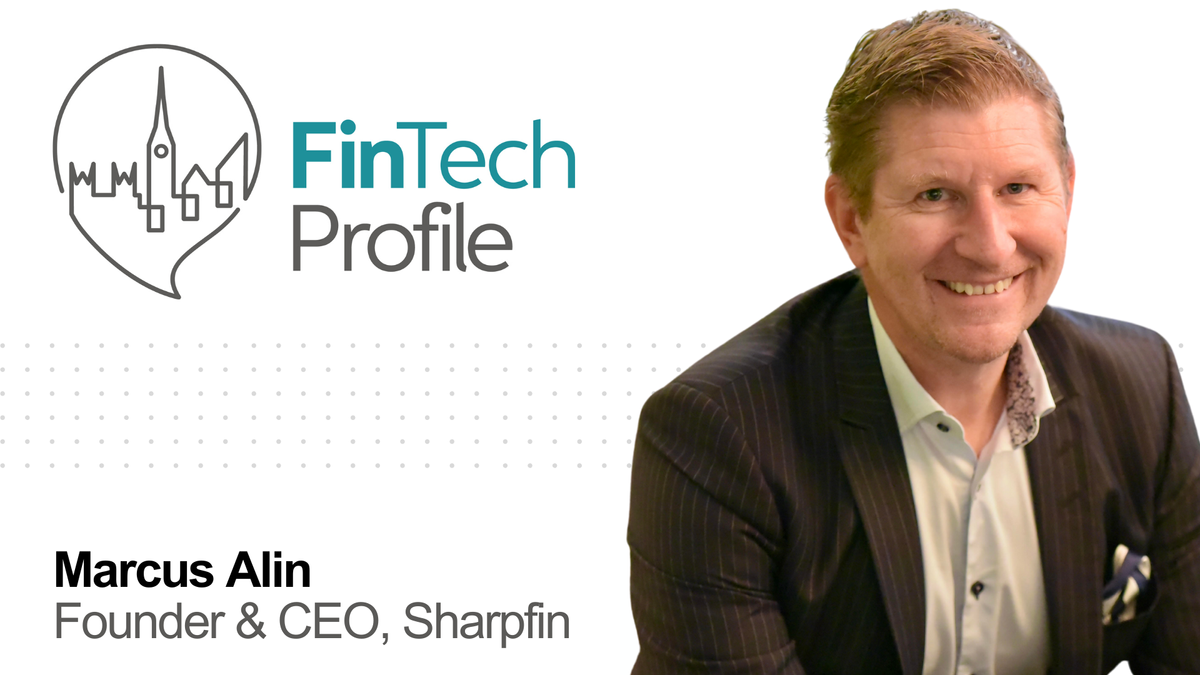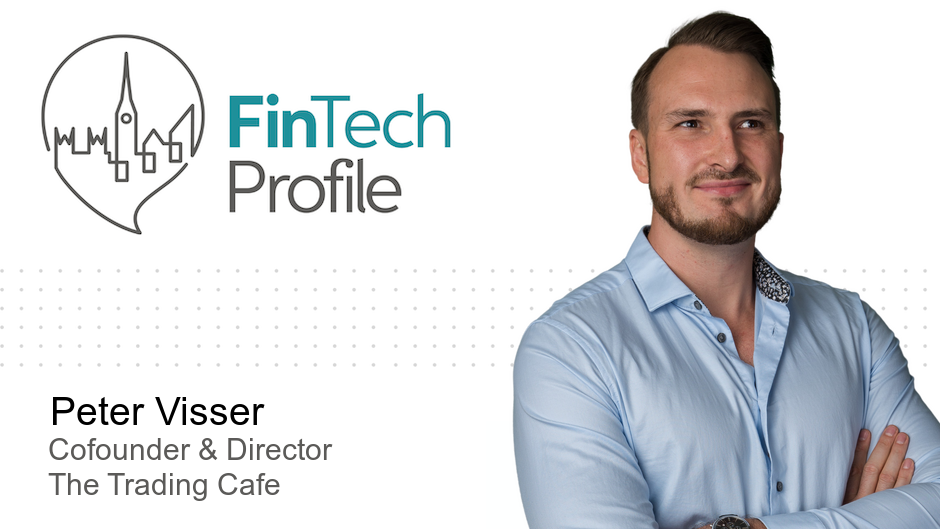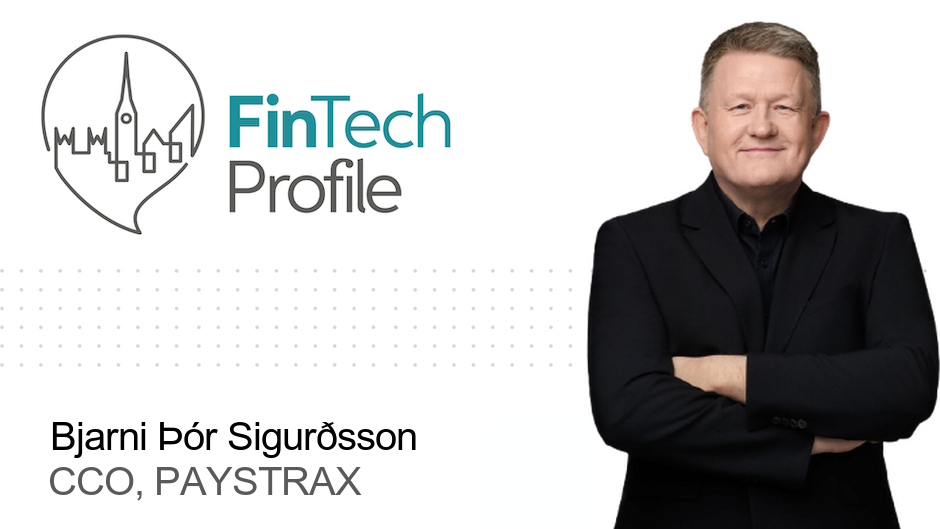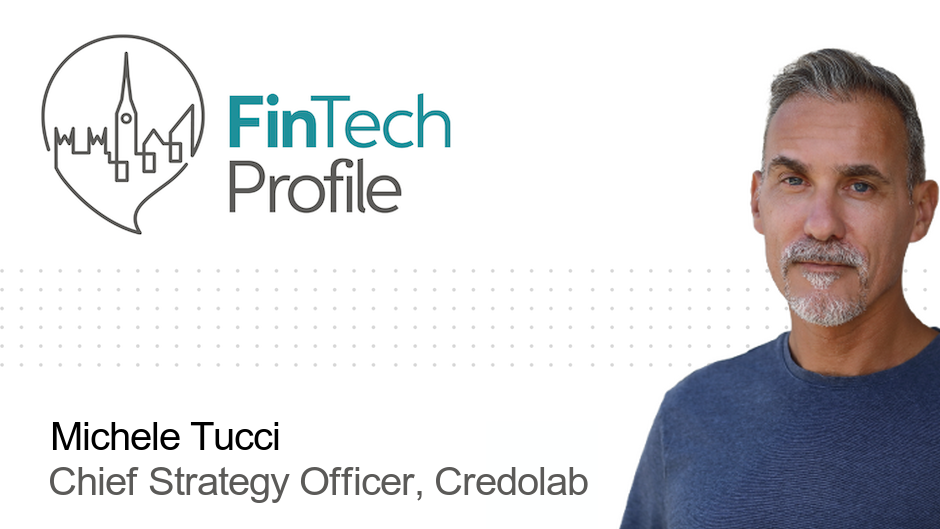Marcus Alin, Founder & CEO, Sharpfin

Today we're meeting Marcus Alin, Founder and CEO of wealth management platform, Sharpfin.
Let's get started! Over to you Marcus - my questions are in bold:
Who are you and what's your background?
I grew up in a small municipality on the west coast of Sweden in the early 1970s alongside my sister and two brothers. Both my parents were teachers and actively involved in charity and politics outside of work. From a young age, I was interested in technology and physics, which led me to pursue a Master of Science in Computer Science at Linköping University of Technology, where I graduated in 1998. By chance, I had the opportunity to write my thesis at the defense industry Oerlikon Contraves in Zurich and the idea was that I would stay just for a year, but it took until 2008 that I returned “home” to Sweden. The years in Zurich were fantastic, and Switzerland remains a second home to me, and probably always will be.
After two years in Zurich, I ended up next to Thomas Wolfensberger (later the founder of Peach Property Group and the social media platform naoo social media at a nightclub, and I was more or less recruited at 1:00am, as a Java coder for his new venture, Swissrisk, which developed systems for the private banking industry.
I had at the time switched from Oerlikon Contraves to Credit Suisse, but I didn’t enjoy the strictly hierarchical banking world. This made me an easy recruit. The next six years at Swissrisk became some of the most rewarding of my professional life.
At Swissrisk, we were a small, dynamic team driven by innovation and camaraderie. My immediate boss, Steven Bates, had previously worked at CERN on a detector for the Higgs particle—two decades before its discovery—setting an academic tone that permeated the company. The environment fostered creativity and encouraged smart, unconventional problem-solving. Those years taught me invaluable lessons about running a business, especially the importance of teamwork, open-mindedness, and adaptability. However, despite the excitement and dedication, we faced significant challenges in developing scalable software, which hindered the product's profitability and growth potential. Still, the experience shaped much of my understanding of what drives success and innovation in a company.
When I moved back to Sweden in 2008, I was driven by a desire to recreate Swissrisk - this time under my own management with all the good lessons I had learned but without all the mistakes. However, I had no network in the financial industry in Sweden so initially I worked as a consultant, integrating portfolio systems for banks such as SEB and Swedbank. During this time, I met Billy Svensson, a brilliant coder, and together we found Sharpfin in 2014. My years in Switzerland and my consulting experience in Sweden had exposed me to widespread dissatisfaction with asset management systems—rarely did I encounter anyone who was wholeheartedly positive about their system or its provider. Being a counterpoint to this dissatisfaction and, on the contrary, developing a product that customers love to use has always been my guiding principle as we built Sharpfin.
Today, nearly a decade later, we are fulfilling that dream. We deliver a constantly up-to-date system to our customers across Sweden, Norway and Finland and have paved the way for scalability that enables a strong growth without the need to invest in significant additional resources. My vision of developing the world's best portfolio system and advisory support for asset and fund managers remains as strong as ever.
What is your job title and what are your general responsibilities?
As CEO and founder, I lead the business development and implementation of technical innovations, ensuring that Sharpfin remains at the forefront of the fintech industry and continually reinventing wealth management systems. My goal is to enhance financial services and optimise operations while maintaining the personal connection between clients and their wealth and fund managers and last but not least develop a software that is lovable among our current and future clients.
Can you give us an overview of your business?
Sharpfin is a full-service, modular SaaS solution designed for wealth and fund managers. Its hyper-personalised, data-driven platform offers comprehensive client insights, faster onboarding, real-time data access, and greater operational efficiency, helping wealth management firms to stay ahead in a changing market while maintaining the personal connection with clients. We believe strongly in efficiency utilising one system and one working process.
A system like Sharpfin needs to include other parts such as electronic signatures, functionality to detect money laundering, and ESG reporting. For these parts we rely on our partner network where we incorporate functionality into our system via third party APIs. An important thing for us is that the user front stays one and that our clients anticipate Sharpfin to deliver the whole functionality. I have seen far too many solutions building on multiple systems and user interfaces and in the end it just creates inconsistent data, confusion and additional Excel spreadsheets to port data from one system to another.
Tell us how you are funded?
I initially seeded the company myself with approximately 2 MSEK, and since then, we have successfully completed multiple financing rounds. With a total of just 24 MSEK in external funding, primarily from business angels, we’ve built a strong and efficient company. I have seen in many cases how large chunks of external funding at early-stage often leads to companies being inefficient. Now, given our reputation and product firmly established, we are ready to scale even further. To support this next phase, we are seeking an additional 15 MSEK in external funding.
What’s the origin story? Why did you start the company? To solve what problems?
The widespread dissatisfaction with wealth management systems has been my guiding principle in founding and developing Sharpfin. Legacy systems have changed little since the early 2000s, and new initiatives often repeat the same mistakes by taking shortcuts that lead to similar challenges. Too many software companies rely solely on their wealth management expertise, believing it will produce the best solutions, when in fact, success requires a blend of deep technical expertise in software architecture and a nuanced understanding of the business.
My vision is to create a wealth management system that clients genuinely love to use—on par with the way people feel about their Apple devices or their favorite car brand. This drive continues to motivate me as I work to demonstrate that Sharpfin is the solution the industry has been waiting for. The only expectation I have of our clients is that they are open to innovation and ready to evolve their business. With a SaaS solution like Sharpfin, which delivers upgrades at least weekly, a certain level of adaptability is essential. Together, we can achieve remarkable results and streamline their organisations.
Who are your target customers? What’s your revenue model?
Sharpfin primarily caters to Discretionary and Advisory Wealth Managers. Companies including Consensus Asset Management, Strand Kapitalförvaltning and fund managers like Simplicity Asset Management are some of our clients. Our revenue model is based on buckets of managed volume along with the modules our clients choose to integrate. The price model starts at < 1 billion SEK in Assets under Management (AuM) and price increases as our client exceeds e.g. 2 billion SEK, 4 billion SEK, and beyond. The price goes up under existing contracts without us having to renegotiate them but the price relative to AuM for our clients decreases drastically as they grow larger.
We provide all current and future functionality as a service under the existing contract. We only ever charge time- and material fee if you incorporate new custodies or change the end client interface to our customer's customer. This transparent model ensures a consistently up-to-date service without unexpected costs. Despite this client-centric pricing structure, we maintain an 80% profit margin across our existing customer base.
If you had a magic wand, what one thing would you change in the banking and/or FinTech sector?
I would replace legacy banking software. While banks have invested in modernising front-end systems, the core of their software is often from the 1960s. This outdated infrastructure has long hindered banks to provide seamless and efficient services to their clients. The banks that commit to replace their legacy infrastructure entirely and dare to invest the billions needed will be the long-term winners in the banking sector. However, I remain sceptical that such a transformation will ever happen within the leading traditional banks. The costs to such a transformation project are far beyond what a bank's board would ever dare to decide upon. Instead, the likely disruptors will be modern online banks.. These players may not yet offer the full range of services provided by the major traditional banks, but they have more flexible technology stacks, and are capable of introducing new features and functionalities at a fraction of the cost—sometimes 1/10th or even 1/100th of what traditional banks require.
What is your message for the larger players in the Financial Services marketplace?
To the larger banks, I would recommend recognising that legacy systems, while foundational to their operations, are becoming increasingly inadequate in addressing the demands of a fast-evolving financial landscape. These systems pose challenges not only to innovation but also to long-term resilience and competitiveness. Therefore, developing a new, cloud-based bank using the most recent technology and migrating client by client to the new IT-infrastructure is the future.
By starting small—migrating select clients or services incrementally—banks can build confidence in the process while minimising disruption. This phased approach ensures a smoother transition and allows institutions to adapt as they go.
Yes, this will be a cumbersome and expensive project, but it will probably be a lot cheaper in the long-term. Starting the transformation now, traditional banks can not only stay competitive but also redefine their role in the financial ecosystem for decades to come.
Unfortunately, for the greater good of everyone, it is hard for new banks to establish due to capital requirements and the fact that traditional major banks enjoy a special benefit of being system critical infrastructure for a country. Otherwise new banks based on the latest technology would have outrun the traditional players a long time ago.
Where do you get your Financial Services/FinTech industry news from?
I get fintech news from various sources. On a daily basis, I read news on LinkedIn, and Swedish tech and business sites such as Di.se, SVD Näringsliv, Realtid, Sak & Liv, Breakit and FinansWatch.
Can you list 3 people you rate from the FinTech and/or Financial Services sector that we should be following on LinkedIn, and why?
- David Ferguson - CEO of Seccl - Brilliant fintech CEO with a long-term engagement to change the industry and who shares many of the values for the industry that I do.
- Sebastian Siemiatkowski - CEO and founder of Klarna. I’m impressed by how he successfully built a thriving company from Sweden and to be part of that journey all the way up to the CEO level of today's Klarna —a testament to his leadership and vision.
- Nicklas Storåkers - Pioneer of the Swedish niche bank industry and now active investor in the fintech space. Currently running his investment company, Yanno Capital , he has an impressive track record of building and supporting numerous start-ups. Nicklas’s ability to identify and nurture innovative businesses aligns closely with my own passion for driving transformation and growth within the fintech sector.
What FinTech services (and/or apps) do you personally use?
I use quite a few, but if I should mention two apps I regularly use the payment app, Klarna (www.klarna.com), and investment platform, Fondo (www.fondo.se).
What’s the best new FinTech product or service you’ve seen recently?
While the needs in Sweden may differ somewhat, I personally believe that the SECCL.tech platform in the UK has done it really well. It is a true role model for Sharpfin's aspirations.
I’m also interested in seeing how the Montrose by Carnegie initiative develops as it positions itself as a competitor to Nordnet Bank AB and Avanza Bank.
Finally, let's talk predictions. What trends do you think are going to define the next few years in the FinTech sector?
As we look towards 2025 and beyond, we’ll be seeing more traditional financial institutions integrating fintech innovations to enhance their services, mixing conventional wealth management with cutting-edge technology. This hybrid approach gives a more holistic and real-time understanding of markets, challenging the conventional methods of investing and setting the stage for a more dynamic, inclusive, and tech-driven future. Tech has also contributed to the democratisation of investing. Through apps and online platforms more people can now access financial markets as it offers lower entry barriers and minimal fees, which were previously only available to wealthier, institutional clients.
AI, which has been a buzzword for years, will move beyond the hype and become a practical tool for enhancing customer experiences, streamlining portfolio management and investment strategies. Blockchain adoption will also be a game-changer. We are already seeing the beginning of blockchain’s mainstream integration. According to the World Economic Forum, by 2027, 10% of global GDP could be tokenized and stored on blockchain, leading to faster, more secure, and transparent transactions. The technology promises to fundamentally alter how we perceive transactions and trust in the digital economy.
Finally, as innovation accelerates, we can expect an increase in regulatory oversight. With the introduction of regulations like the EU’s Digital Operational Resilience Act (DORA), fintech companies must ensure they meet new data protection and security standards while maintaining operational resilience amid increasingly complex cyber threats. Similarly, the Markets in Crypto-Assets Regulation (MiCA) underscores the growing importance of cryptocurrency regulation. Fintech companies must not only meet these evolving standards but also adapt quickly to maintain security, trust, and efficiency.
Thank you so much for taking the time to participate Marcus!
You can read more about Markus Alin on LinkedIn and his company Sharpfin - wealth management platform at https://www.sharpfin.com/.




